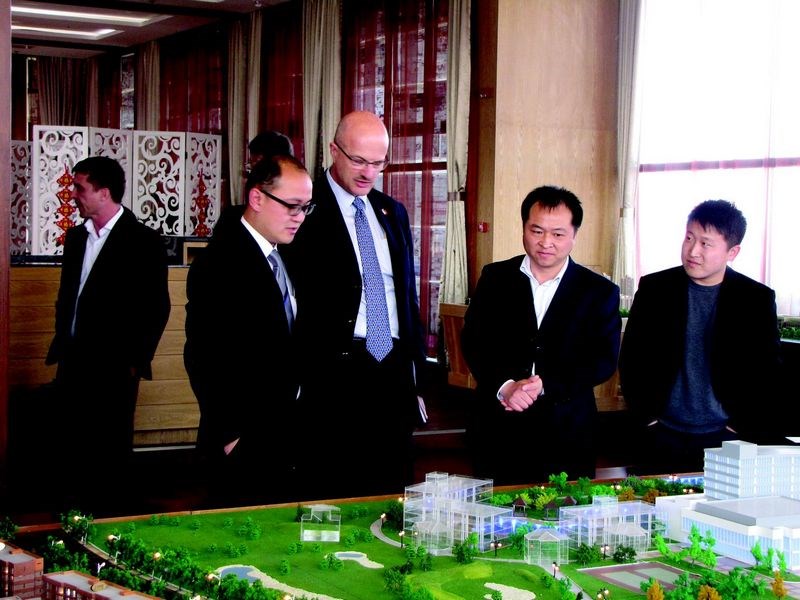The Chinese province of Hebei now has a third wood-truss plant, and is planning to build a wood-frame research centre, more examples of the country's growing interest in wood.
"The Hebei government has shown a strong interest in stepping up to become one of the leaders in wood-frame construction in China," said Jobs, Tourism and Innovation Minister Pat Bell during a stopover in Hebei.
"They know that B.C. wood products will enable Hebei to meet its commitment to urban development with low-carbon building materials."
Hebei, southwest of Beijing, was one of the first areas to start using B.C. lumber to manufacture its own wood products for building and housing construction. Three truss plants have opened around Hebei in the past five months, including one plant in Shijiazhuang that can produce trusses for 400 apartment buildings per year.
Hebei's next major project is a Building Science Research Centre for the provincial Ministry of Housing and Urban-Rural Development.
The centre's dormitory, auditorium and lobby will feature 3,600 square metres of wood-frame construction. The project is set to begin construction next month.
British Columbia lumber shipments to China reached a new plateau in 2010, hitting 2.8 billion board feet and a value of $687 million, supplanting Japan as the province's No. 2 export destination.
The lumber shipped to China is equal to the production of about one dozen sawmills. The growing Chinese market has helped restart plants in north-central B.C. still suffering the impacts of a U.S. housing collapse. For example, Canfor Corp. re-opened its Quesnel sawmill last summer to deliver lumber exclusively to China, putting 155 workers back on the job.
The growth into China has been rising steadily since 2006 when the value of shipments was $65 million. The shipments grew to $177 million in 2008 and hit $315 million by 2009 when 1.63 billion board feet of lumber was exported to China.



